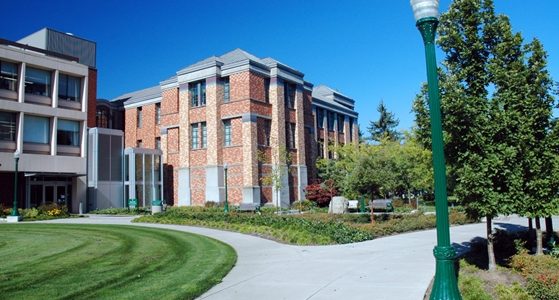
Colleges and universities face a unique set of circumstances when it comes to controlling energy usage. Campuses often have hundreds of buildings varying drastically in size and function, with many built decades apart from one another. Some buildings are large and house classrooms or offices, while others are designed to hold thousands of students who might stay up all night working on term papers.
Regardless of the composition of the campus and its population, reducing the amount of energy used for heating and electricity is critical for every school. Here are a few tips for campus facility managers on how to reduce the energy students and faculty use, saving the college or university money and reducing its carbon footprint.
Upgrade your buildings' envelopes
The first step to using less energy across the whole campus is to make each building more efficient. You can't save energy if heat is simply flowing out of every building on campus. This is particularly important for older buildings.

According to a study of college and university energy spending by National Grid, heating accounts for nearly one-third of the energy use on a campus. The Northeast utility company explained that this made heating, along with electricity use, the best targets for reform to cut costs and consumption.
One way to use heat more efficiently is to improve the building's envelope. Whether new or old, brick or metal, academic or housing, almost every building on campus can be better sealed and caulked to keep warm air inside in the winter and cool air in during the summer.
By sealing windows, exterior building cracks, architectural gaps and other areas where air may escape, your campus' heating system won't have to use as much energy to keep the environment a comfortable temperature. Implementing building envelope improvements across campus can drastically reduce the overall energy costs for a school.
"Heating accounts for nearly one-third of the energy use on campus."
There are often federal, state and local rebates or tax breaks for caulking and improving building envelopes.
Another option to reduce a building's energy use is to install window film that regulates the effect of sunlight on the building. For example, window film can prevent UV light from heating a space in the summer and eliminate the related cooling costs. Window film also carries security advantages that are critical on a college campus.
Talk to Clean & Polish Building Solutions about caulking your campuses' buildings, adding window film and saving money on your heating bill.
Focus on lighting
Aside from heating, lighting is one of the most expensive energy costs of running a college. Because there are so many spaces on a college campus, from athletic facilities and academic buildings to housing and cafeterias, it's easy for lights to be on constantly.
Experts advise colleges and universities install motion-sensitive or timed lighting for many buildings. Another investment, which often carries financial incentives just like caulking, is replacing older light bulbs with more efficient options.
Campus energy advocacy group CLASS 5 Energy suggested schools provide students with low-energy bulbs when they come to campus for their dorm rooms for better long-term savings.

Get the students and faculty involved
In addition to managing the buildings on a macro level, start an awareness campaign for students and faculty to reduce energy use on a smaller scale.
If every student uses power strips, shuts down electronics when they're not in use, avoids wasteful behavior and shut off lights regularly, your campus will see a significant savings. Students using computer labs and other municipal study areas can also help cut down on power use. Professors and teachers can also help in the classroom and their offices.
Involve a campus group that's interested in helping the environment in your cause to get the word out. Be frank with how much the school spends on power and how much students can help save.


